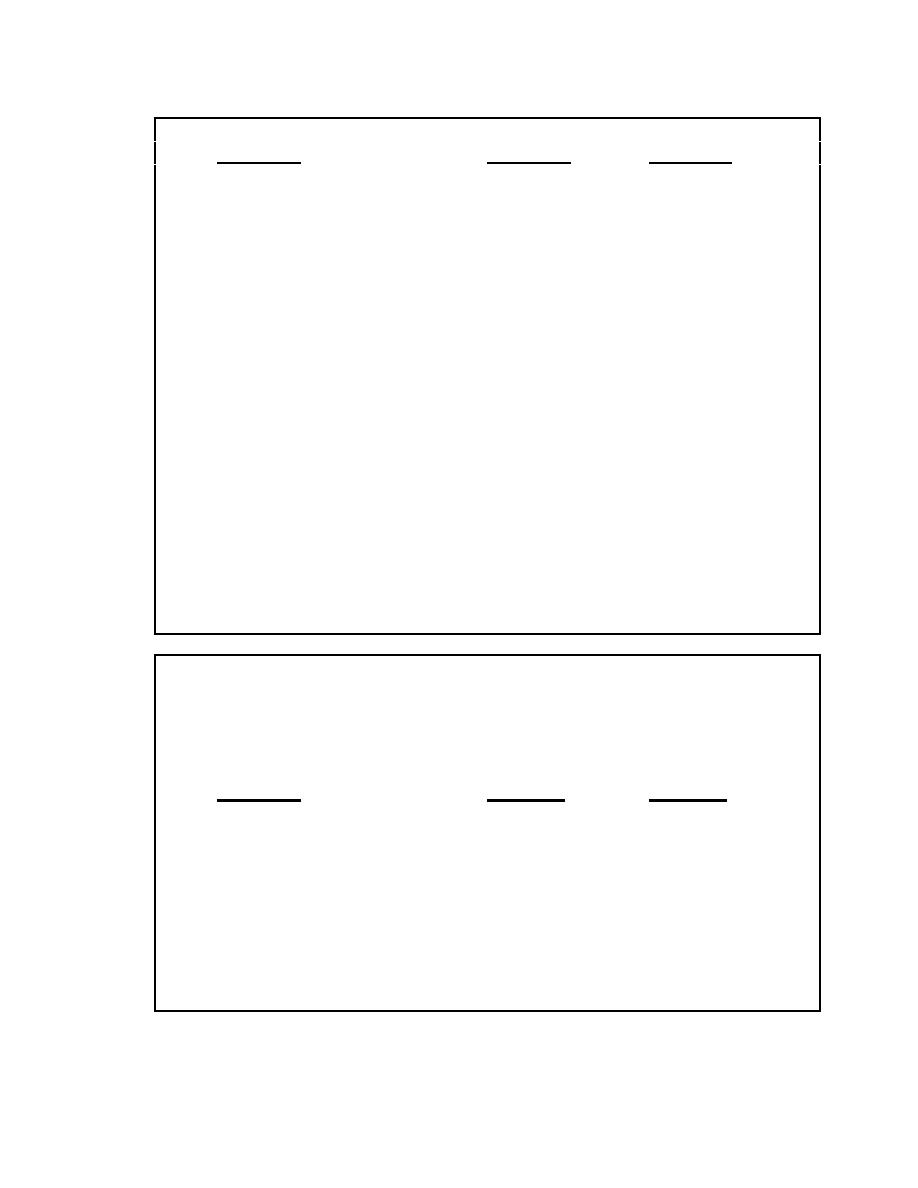
UFC 3 -520-01
June 10, 2002
Input Data
#3/0 AWG
#4/0 AWG
Conduit size
51 mm (2 inch)
51 mm (2 inch)
Conductor resistance (30 C)
0.0164
0.0130
Estimated power loss (3 phase)
673 W
534 W
Estimated wire cost
1
||content||
,232
Estimated conduit cost
5
5
Incremental cost
1
Projected energy savings
609 kWh/year
Cost savings at
||content||
.08 per kWh.72/year
Payback period
5 year
In the above example, the copper conductor resistance was obtained from NEC
Chapter 9, Table 8 (2002 Edition), and corrected for use at 30 C (rather tha n
75 C as listed in the table) in accordance with the following expression provided
by a footnote in the same table:
R2 = R1 [1 + 0.00323 (T - 75)], where R1 is the copper conductor
resistance at 75 C.
The estimated power loss was then calculated by:
Power Loss = I 2 R
EXAMPLE: A single -phase, 15 ampere lighting load operates only 50 hours per
week (2,600 hours per year) and is located 30.5 meters (100 feet) from the load
center. As shown below, the larger #10 AWG conductor pays for itself i n just
over 1 year. Thereafter, the installation continues to save energy costs of almost
per year compared to the smaller #12 AWG conductor.
Input Data
#12 AWG
#10 AWG
Conduit size
12.7 mm (0.5 inch)
12.7 mm (0.5 inch)
Conductor resistance (30 C)
0.3384
0.2120
Estimated power loss (1 phase)
76 W
48 W
Estimated wire cost
Estimated conduit cost
Incremental cost
Projected energy savings
73 kWh/year
Cost savings at
||content||
.08 per kWh.8/year
Payback period
1.2 year
B-8


 Previous Page
Previous Page
